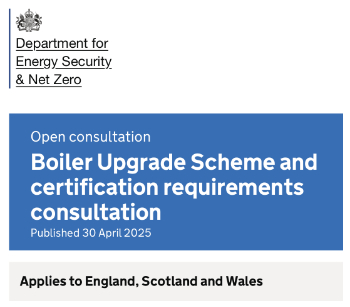Air-rights buildings

|
There is a great demand for new development in the UK, whether to satisfy commercial needs, or to supply the housing market. However, as our cities become more congested, not only greenfield, but also brownfield plots become more rare. In addition, protections such as conservation area status, listed buildings and so on can make it difficult to clear sites for redevelopment. It has become more common therefore to consider developing below existing properties, in basements, and also above them (often termed 'overbuild').
Generally, the owner of a property will also own the rights to the air above the property that they could reasonably use (excluding the flight paths of aircraft). That is, they may, subject to planning permission, be able to develop above their property. However, these rights can be sold or leased, enabling the construction of ‘air-rights’ buildings. Typically, air-rights buildings are constructed above existing infrastructure such as roads or railways, or over buildings such as low-rise shopping centres that may have been developed when space was at less of a premium.
Being built over existing assets means that no land is required for these developments - which is a huge bonus for high-density, urban locations. In inner cities, air rights buildings may increase public transport ridership, which in turn means less congestion and emissions and so constitutes a more sustainable solution to urban development. Furthermore, they may offer financial incentives for asset owners who may benefit from the development.
The first air-rights building in the UK was One Embankment Place, a commercial office building for PwC constructed above Charing Cross station and completed in 1991. Not only did it build above Charing Cross station, but its services and lifts pass through the station itself. Other air-rights buildings include; Alban Gate at London Wall; Broadgate in the City of London and the Cannon Place development above Cannon Street Station.
Air-rights buildings can be extremely complex, requiring negotiations with multiple owners and occupants, as well as considerations which may include a requirement to keep existing facilities running, issues to do with structural disturbance, access, safety and security. This has inevitably meant that air-rights buildings tend to be more expensive, they take longer and represent a higher risk than simply building on the ground. However, following an initial spate of air-rights buildings in the 1990s, there is fresh interest in the idea because of the lack of availability of more straightforward sites. While the acute shortage of affordable housing in the UK has seen developers and local authorities consider creating residences above stations and rail lines (rail overbuild).
In addition, reliable technologies have been developed that ensure sound and vibrations are not transferred from existing structures (such as railways) to new air-rights buildings.
In the USA, air rights can be traded as Transferrable Development Rights (TDR). The rights to construct to a certain level of density above an existing building (typically a heritage building such as a church) are traded with the owner of another plot, enabling them to develop a at greater density (or higher) than would otherwise have been permitted.
In 2014, a report by global engineering consultancy WSP, 'Building our way out of a crisis - can we capitalise on London's public assets to provide homes for the future?' suggested that building above public assets in London could provide space for up to 630,000 new homes.
WSP continued its studies into the subject with the publication of two reports on building above railway infrastructure, both of which demonstrated the potential for substantial housing gains:
- In 2018, it published 'Out of Thin Air'
- Followed in 2019 by 'Out of Thin Air - One-Year On' (download PDF)
In February 2019, it was announced that Homes England has agreed a £9 million funding deal with 'airspace' developer Apex Airspace Developments to build homes on London rooftops in Tooting, Wanstead, Walthamstow, Putney and Wallington. Ref https://www.gov.uk/government/news/brokenshire-unveils-500-million-affordable-homes-funding-boost--2
NB: the term 'oversite development' (or overbuild) refers to a new construction that does not interfere with and is not related to the operation of an exsisting scheme, and which can be built over and around the scheme’s operational structures (e.g above stations).
In Scottish land law, the term 'A coelo usque ad centrum', meaning ‘from the sky (or heavens) to the centre’ refers to the ownership of land in Scotland, which generally includes everything above and everything under the land - through to the centre (of the earth)
[edit] Related articles on Designing Buildings
Featured articles and news
An engaging and lively review of his professional life.
Sustainable heating for listed buildings
A problem that needs to be approached intelligently.
50th Golden anniversary ECA Edmundson apprentice award
Deadline for entries has been extended to Friday 27 June, so don't miss out!
CIAT at the London Festival of Architecture
Designing for Everyone: Breaking Barriers in Inclusive Architecture.
Mixed reactions to apprenticeship and skills reform 2025
A 'welcome shift' for some and a 'backwards step' for others.
Licensing construction in the UK
As the latest report and proposal to licence builders reaches Parliament.
Building Safety Alliance golden thread guidance
Extensive excel checklist of information with guidance document freely accessible.
Fair Payment Code and other payment initiatives
For fair and late payments, need to work together to add value.
Pre-planning delivery programmes and delay penalties
Proposed for housebuilders in government reform: Speeding Up Build Out.
High street health: converting a building for healthcare uses
The benefits of health centres acting as new anchor sites in the high street.
The Remarkable Pinwill Sisters: from ‘lady woodcarvers’ to professionals. Book review.
Skills gap and investment returns on apprenticeships
ECA welcomes new reports from JTL Training and The Electrotechnical Skills Partnership.
Committee report criticises UK retrofit schemes
CIOB responds to UK’s Energy Security and Net Zero Committee report.
Design and construction industry podcasts
Professional development, practice, the pandemic, platforms and podcasts. Have we missed anything?
C20 Society; Buildings at Risk List 2025
10 more buildings published with updates on the past decade of buildings featured.
Boiler Upgrade Scheme and certifications consultation
Summary of government consultation, closing 11 June 2025.
Deputy editor of AT, Tim Fraser, discusses the newly formed society with its current chair, Chris Halligan MCIAT.
























Comments